Posts Tagged ‘Rajapaksa’
Why Sri Lanka’s ‘Aragalaya’ protesters are divided on backing President Ranil Wickremesinghe
Posted on: August 23, 2022
The debt-ridden country saw more than four months of protests this year over the mismanaged economy and major shortages of necessities
Analysts said former protesters are divided on what to do next; some are keen to continue protesting, others want to give new leader a chance
Text and Photographs: Sonia Sarkar
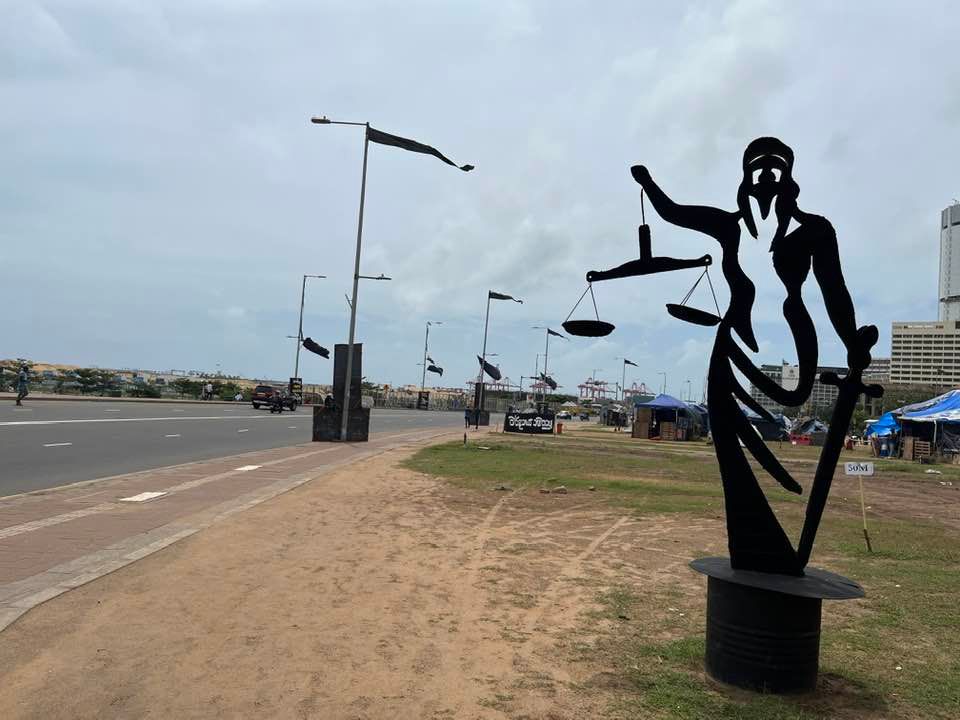
Sri Lankan social media expert Vimukthi Dushantha quickly left anti-government protests in Colombo’s Galle Face Green park late last month after Ranil Wickremesinghe was elected president.
Then, at his invitation a couple of weeks ago, Dushantha and around 20 other protesters were happy to meet him to try to help map out a course of action for the debt-ridden island nation, which saw ousted president Gotabaya Rajapaksa’s resignation on July 15 amid huge demonstrations over the mismanagement of the economy.
Dushantha, 28, who set up the protest group Black Cap Movement in March with 1,000 members said he and his colleagues laid out “a series of demands related to constitutional reforms for the next six months”. “At this stage, we want to deal with the government and not disrupt it,” he added.

President’s secretariat at Colombo
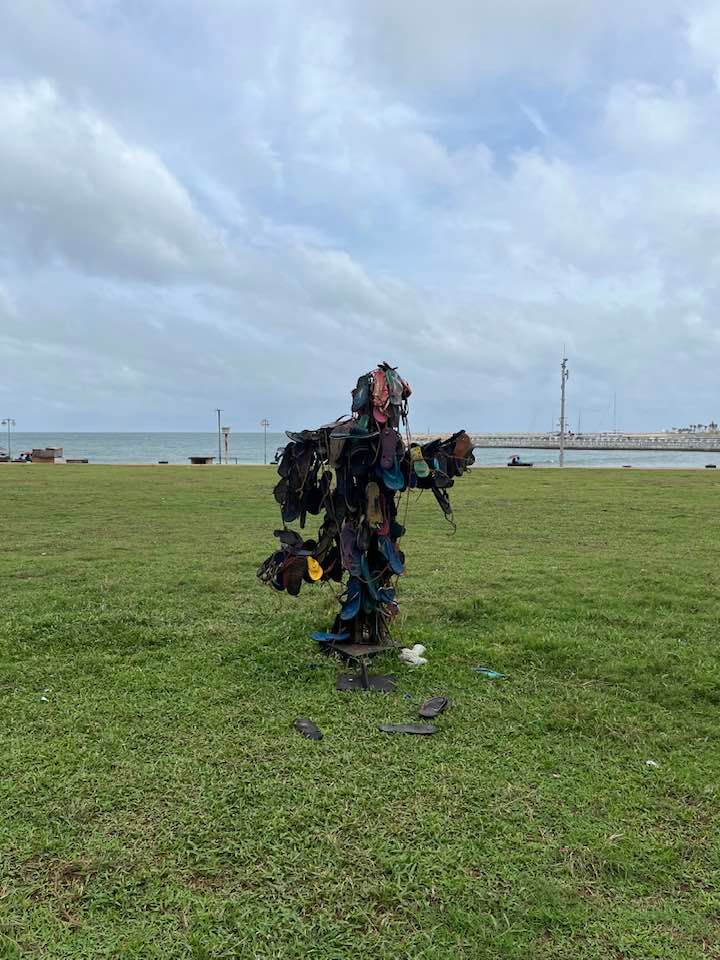
Slippers and shoes of protesters piled up at Galle Face Green park
However, not everyone is happy to work with the new president. Maths tutor Thisara Anuruddha Bandara, also 28, was arrested twice during the months-long protests and left his job in May to be part of the movement 24/7.
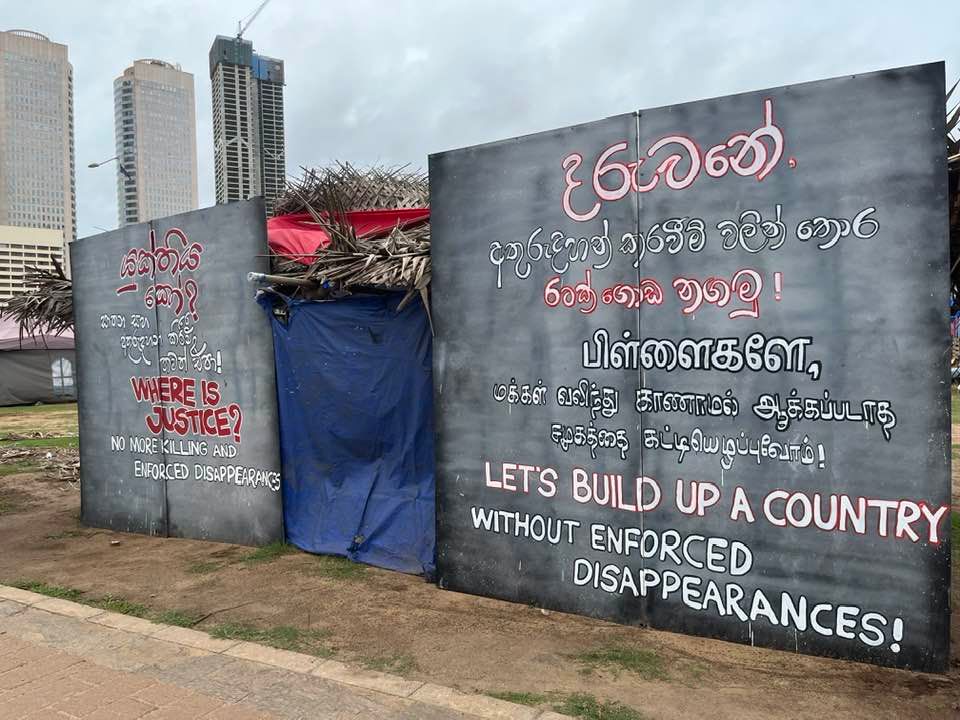
“We, the ‘Galle Face protesters’, are soon going to reorganise the protests, which will be much bigger and more effective than the previous one,” he said.
Both Dushantha and Bandara were part of ‘Aragalaya’ (the struggle) that started in March, calling for the removal of Rajapaksa and his brother Mahinda, the former prime minister, because of a severe financial crisis that led to major shortages of fuel, food, and medicines.

Billboards call for unity
But now the Rajapaksa brothers are no longer in charge, the protesters look divided, according to analysts.
Sociologist Kalinga Tudor Silva said that while the protests initially led to a rare “political” and “social” awakening and saw participation irrespective of class, caste, ethnicity, gender, religion and profession, Wickremesinghe had “divided” Aragalya protesters.
But with Wickremesinghe offering a sense of normalcy – like vehicles getting five to 20 litres of fuel per week, power cuts reduced from 13 hours to about three hours a day and efforts to get a bailout package from the International Monetary Fund – some protesters want to give the president and the parliament a “chance”, Dushantha said.
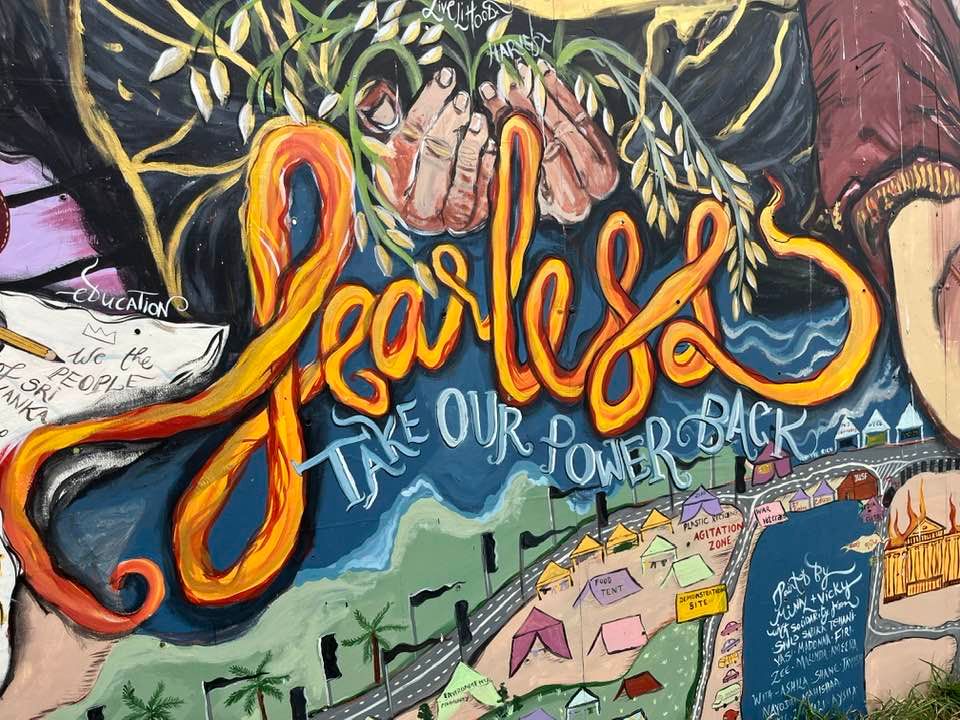

Many ordinary citizens have pointed out that the price of many necessities – including petrol, bread and rice – have tripled since early this year, and the cost of electricity is up by as much as 264 per cent for some, and say that the president is offering too little, too late.
Not as many people are organising or taking part in larger protests as before due to severe police crackdowns, said Bandara.
Police and special forces also forcefully removed protesters sleeping in tents at the main anti-government demonstration site in Colombo and some were beaten and assaulted, said Amnesty International last month.
“The liberal rich believe Wickremesinghe is better than Rajapaksa. A lot of people have left the protests because they have either faith in Wickremesinghe or they are scared to face repression,” Silva said.
Human rights defender Ambika Satkunanathan said that the business and privileged class, who have always been supportive of Wickremesinghe, see “stability” as incompatible with protests and dissent.
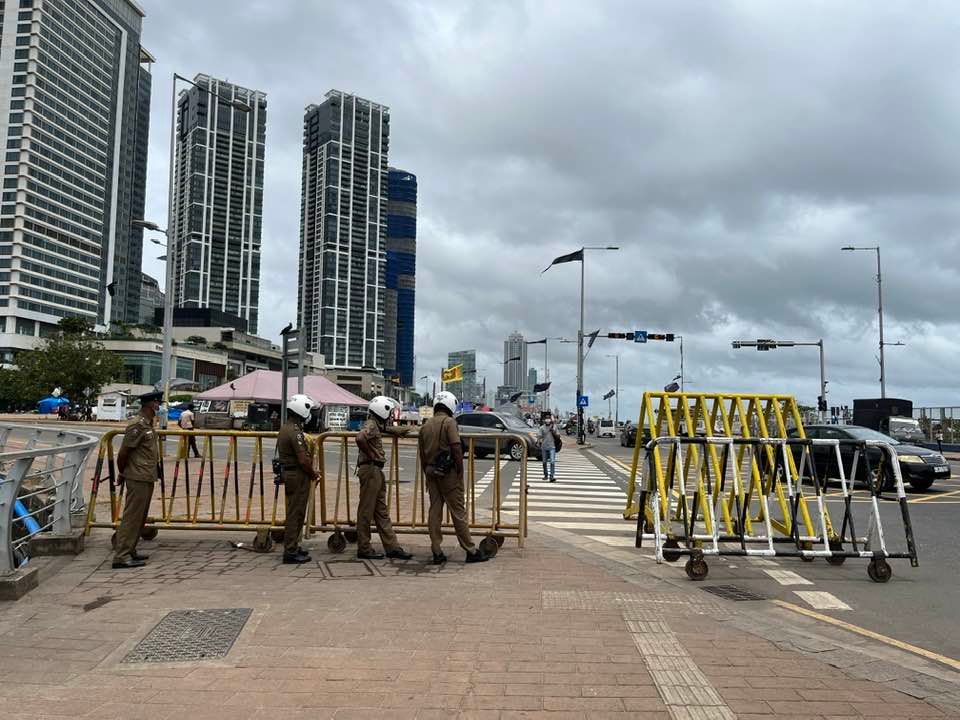
Police on patrol at Galle Face Green
Sociologist Ahilan Kadirgamar said Wickremesinghe is carrying out a “counter revolution with tremendous repression,” which will eventually make it clear who is on which side.
Sections of the Colombo elite have thrown in their lot with the new prime minister, while the mass of people who are facing food inflation of around 90 per cent are bound to resist the repression and dispossession.
“But this repression may lead to another wave of powerful struggles,” said Kadirgamar, a senior lecturer at the University of Jaffna.
Adding that the “smaller section of people” who have left the movement to support the current government were mostly Wickremesinghe supporters and they had only wanted Gotabaya to resign, Bandara said there were a larger number of protesters who had earlier chanted “Gota, go home” and were now chanting “Go, Ranil, go.”
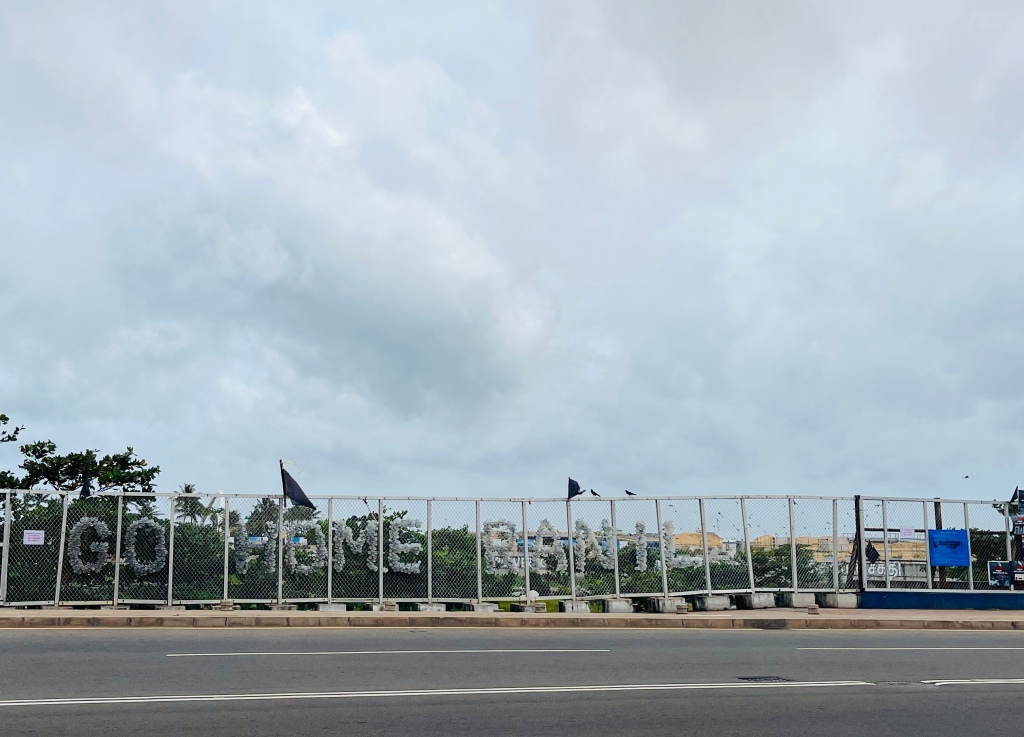
Go Home Ranil –Galle Face Green
“These protesters never wanted Wickremesinghe to assume power because he is not the people’s president, only another protector of the corrupt system,” said Bandara.
Wickremesinghe, who once labelled the protesters “fascists”, is “shrewd” but does not have his ear to the ground, said Father Nandana Manatunga, head of the Kandy-based Catholic non-profit Human Rights Office. He said he thought the new leader should be grateful to protesters as he would have not been able to come to power without them.
Gotabaya Rajapaksa appointed Wickremesinghe as prime minister in May after Mahinda resigned. Last month, Rajapaksa’s Sri Lanka Podujana Peramuna (SLPP) party, which has a majority in the 225-seat parliament, elected Wickremesinghe as president after Gotabaya fled to Singapore.
SLPP, however, now wants the new president to facilitate Rajapaksa’s safety upon his return to Sri Lanka.

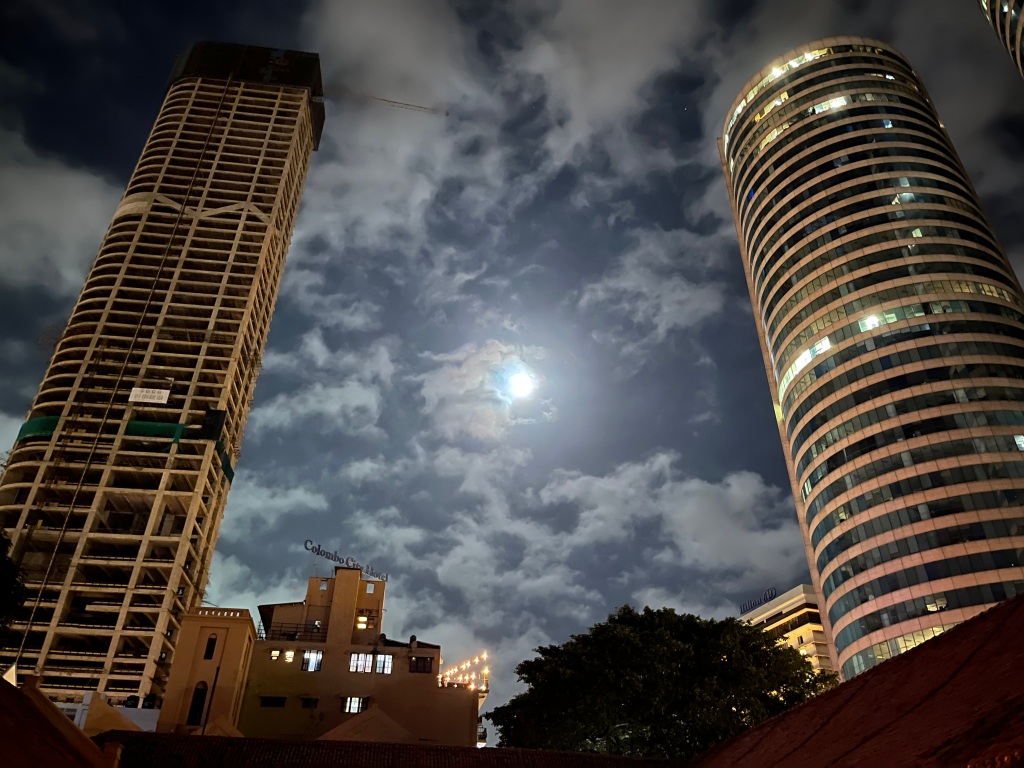
Colombo at night
But, Silva said, what works in Wickremesinghe’s favour is that he is not seen as a “Sinhalese Buddhist nationalist”, like those in the Rajapaksa family.
“Plus, he doesn’t have children, so he won’t have interest in building up a lineage or accumulating wealth,” Silva added.
Arjuna Parakrama, an English professor at the University of Peradeniya, however, believed Wickremesinghe was using the crisis to push through a neoliberal agenda of privatisation, reduced subsidies and safety nets, and the destruction of free healthcare and education.
These policies have been the cornerstones of Sri Lanka’s development philosophy even during the depths of civil war.
Calling Wickremesinghe a “stooge” of the Rajapaksa family, Parakrama said that he had been appointed to serve the interests of their family and he will complete his term as president, with the help of the military, until the ground is prepared for Mahinda Rajapaksa’s son 36-year-old Namal to contest the presidential elections in 2024.
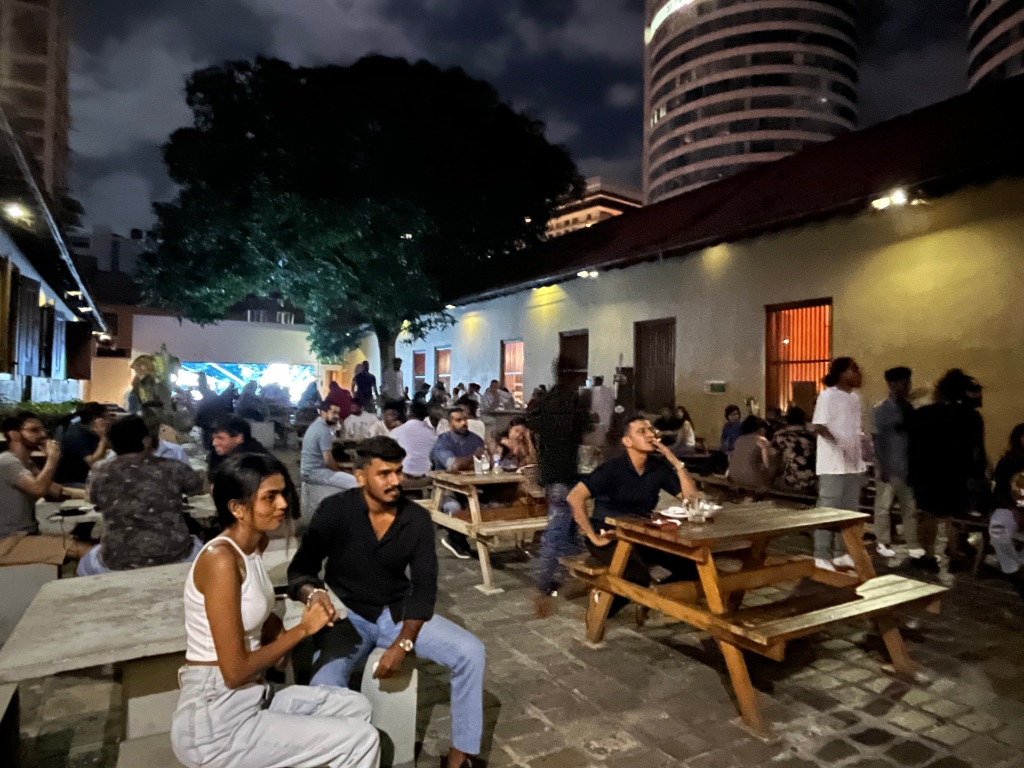
Namal recently asked environment minister Naseer Ahamed to accommodate two people of his choosing in a subsidiary company of national entity the Geological Survey and Mines Bureau. Dushantha’s Black Cap Movement has vehemently opposed any move by the government to accommodate Namal in the new cabinet.
Kadirgamar said it is in the interests of the Rajapaksa family and Wickremesinghe to continue with the current arrangement until 2024 as “all of them are likely to get hammered” in any early election.
But, he added, the Rajapaksa family has been “banished from politics for the foreseeable future” and it would be difficult for Namal to make a comeback into any significant position in the next decade.
The story was published in South China Morning Post on 22 August, 2022
minister of Sri Lanka’s Northern Province
PIC: SONIA SARKAR
The war in Sri Lanka may be over, but the battles continue. The 30-year-long civil war in the Northern Province ended five years ago. Yet, for the people of this troubled area, there is no end to the conflict.
“The official war has ended but the unofficial war has just started,” says C.V. Wigneswaran, the province’s first Tamil chief minister.
Four years after the rebel group, Liberation Tigers of Tamil Eelam (LTTE), was wiped out by the Sri Lankan army, elections were held in the war-torn Northern Province of Jaffna, Kilinochchi, Mannar, Mullaitivu and Vavuniya. Wigneswaran was appointed the CM in the 2013 polls, which was held after 25 years.
The chief minister, who was in Delhi last week to attend the World Hindu Congress, organised by the Vishwa Hindu Parishad, may be looking at informal alliances in India. “There is need of Hindu solidarity as far as the Northern Province is concerned. So I came,” he says in his first interview to an English paper in India after his election.
Many Sri Lanka watchers in India, however, stress that Wigneswaran’s attitude towards India has been ambivalent. For instance, he refused to be part of the Sri Lankan delegation, led by President Mahinda Rajapaksa, which attended the swearing-in ceremony of Prime Minister Narendra Modi in May.
“It was nothing against India,” he clarifies. “By asking me to be part of the delegation, Rajapaksa wanted to show the world that we were all together. That was nonsense.”
How does he compare the two leaders of the neighbouring nations? “Modi is like Rama and Rajapaksa is like Ravana,” he laughs. Does he see Modi as a strong leader? “He could be strong but those who are strong need to be humane too. Your humanity shouldn’t be deadly,” he replies.
The chief minister is more direct when asked to comment about the Dravida Munnetra Kazhagam and the All India Anna Dravida Munnetra Kazhagam, which have been espousing the cause of Sri Lankan Tamils. Wigneswaran believes that it’s time they stopped worrying about the Lankan Tamil community.
“There is no need for the political parties in the South to become our spokespersons. Now we are here to voice the issue of Tamils.”
A staunch critic of Rajapaksa, Wigneswaran says that his presidency is no less than a dictatorship. He accuses the government and the army of human rights violations.
The huge presence of the army in the Northern Province is a reason the region is still troubled. “The soldier to civilian ratio in the north is 1:8,” Wigneswaran says. “Acres of lands have been taken by the army to set up camps. There are areas where even I, as chief minister, cannot enter without the permission of the army,” he complains.
He blames the “flawed” 13th Amendment for much of the province’s problem. The amendment was a product of the 1987 Indo-Sri Lanka Accord, signed by then Indian Prime Minister Rajiv Gandhi and Lankan President J.R. Jayewardene.
Under this, the “only official with executive powers” is the governor, who is appointed by the President. “Without the governor’s approval, the council and the chief minister are ineffective,” he points out.
He says that there is starvation in some areas of the province, but the government has neither given it funds nor allowed the UN World Food Programme to reach out to the people. He also accuses the government of discriminating against Tamil fishermen who, unlike Sinhalese anglers, are not allowed to use trawlers.
What about the issue of Indian fishermen who are often jailed in Sri Lanka? On Wednesday, Modi thanked Rajapaksa in Kathmandu for releasing five Indian fishermen sentenced to death for drug trafficking.
Wigneswaran is not impressed. “Rajapaksa wants to show the world that he is majestic enough to oblige Modi by releasing the five fishermen,” he says. But the irony, he says, is that three Sri Lankan fishermen, who were also sentenced to death in the same case, have not been pardoned.
Wigneswaran, who calls himself a “reluctant” politician, was a judge in Sri Lanka’s Supreme Court and a fierce critic of Rajapaksa even before he joined politics.
Getting into politics was accidental, he explains. He was persuaded to fight the election five months before the polls by the Tamil National Alliance (TNA), a conglomeration of five groups – Ilankai Tamil Arasu Kachchi, the Tamil United Liberation Front, the People’s Liberation Organisation of Tamil Eelam, the Eelam People’s Revolutionary Liberation Front and the Tamil Eelam Liberation Organisation. The TNA won 30 seats in the 38-member provincial council.
He believes that India should now follow in the footsteps of the European Union and lift the ban on the LTTE. The 75-year-old politician, sitting in his room in a five-star hotel in Delhi’s diplomatic enclave, Chanakyapuri, shrugs off apprehensions voiced by Sri Lankan government officials that giving away too much power to the Tamil-dominated TNA could lead to the resurgence of the LTTE.
“This is nonsense. There has been no activity of violence for five years,” he says.
Wigneswaran believes that Rajapaksa’s popularity is diminishing in Sri Lanka and he predicts that he will face a drubbing in snap polls scheduled for January 8, 2015. Rajapaksa’s fading popularity is evident from the fact that his party won the recent polls in the southeastern province of Uva, but with 21 per cent fewer votes than in 2009. Many members of his government and party, the United People’s Freedom Alliance, have joined the Opposition, unhappy about the concentration of power round Rajapaksa and his family members who hold key positions in the government.
“The Rajapaksa family has taken control of the economy, power and the party in the country. They should go,” he says.